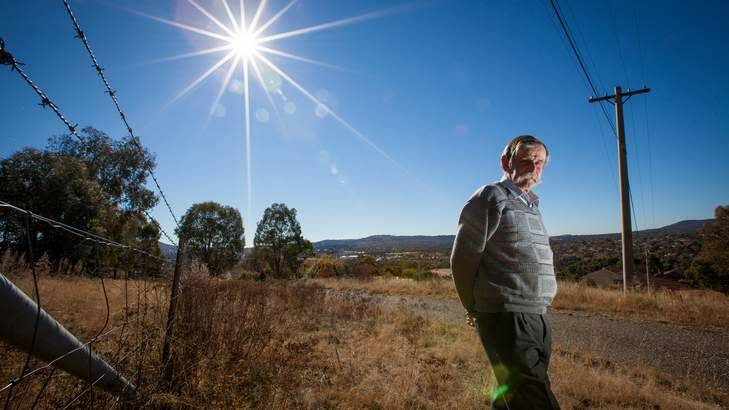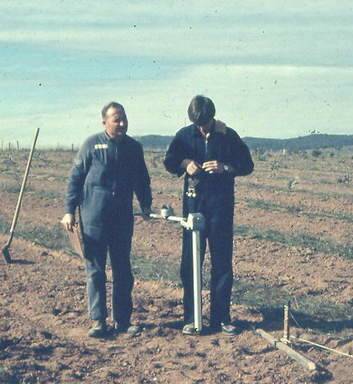Forty years ago this week, Flying Officer Bill Mayne led a 14-man bomb disposal team into a peaceful sheep paddock to Canberra's south.
Subscribe now for unlimited access.
or signup to continue reading
Over the next 22 months, they dug up an estimated 25,000 practice bombs, clearing the former WWII bombing range to make way for the new suburbs of Tuggeranong, which now houses more than a third of the ACT's population.

Now a retired Group Captain, Bill Mayne returned to Mount Stranger above Bonython on Tuesday to look out over the community of 87,119 people his crew had helped make possible.
John Clarkson, a corporal with the RAAF in 1973 and crew member, goes on: ''We were officially known as No.1 Central Ammunition Depot, Detachment A, Tuggeranong,'' he said. ''Our merry band of men had arrived to clear the old range so the new suburb could be built.

''During our first few days and weeks we were to learn more of its history. The RAAF found it difficult to locate any range log books and had to create a record from anecdotal and personal records from WWII.''
The work, while tedious and time consuming, lacked a sense of real danger as the range - used by Dutch and Australian air crews - was mainly targeted with smoke-generating practice rounds.
''The old practice rounds didn't explode,'' said Group Captain Mayne, who now raises alpacas on the northern outskirts of the ACT. ''They contained a substance which generated cold smoke when it was exposed to the air [by the force of the bomb hitting the ground].''
He said lack of excitement over the two-year operation meant one of his biggest challenges was keeping the team interested and alert.
''It wasn't quite the challenge our last clearance operation had been,'' he said. ''That was the high explosive bombing range at Mona Point just north of Williamstown.''
Mona Point had taken a real battering. It had been targeted by heavy bombers, shelled by the navy and struck by salvo after salvo of rockets - some of which had 28-kilogram warheads.
''This was a lot more exciting; the rocket warheads, in particular, were very volatile.''
Group Captain Mayne said the bomb disposal crew had done a good job given the tens of thousands of practice bombs that had been dropped on the site over the years.
''There were some reports of bombs being found while they were building Tuggeranong but, all things considered, we didn't miss much.''
He said that while the weapons were fairly innocuous, they did have the potential to cause alarm. ''They do have a bomb shape when you dig them up.''
Mr Clarkson, who left the RAAF with the rank of sergeant, has fond memories of the operation.
''The personnel involved with the Mona Point exercise were supplied from nearby units for brief attachments,'' he said. ''It was difficult to maintain continuity of personnel. When Tuggeranong commenced, it was decided to post all the required staff to the unit. This was to prove far more successful as our small unit became a most enviable group of men.''
Nicknamed ''the Tuggeranong Tent Club'', the unit had to adapt to some different working conditions.
''We soon learnt that locating a 1000 pound (480-kilogram) bomb in beach sand dunes was very different to finding small practice bombs in heavy clay and amongst rocks,'' he said. ''In the summer, when temperatures reached the low 40s, we started work right on 6am, go through until noon and then break for three hours.
''Then, during the hottest part of the day, we'd have lunch and a swim in the nearby Murrumbidgee River.''
Today, with Tuggeranong best known for landmarks such as the Hyperdome, the lake and its arts centre, few residents would be aware that once upon a time the hills echoed to the sounds of incoming bombers.

